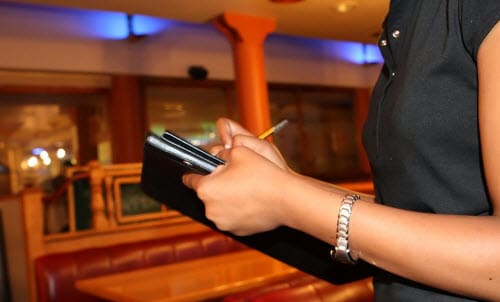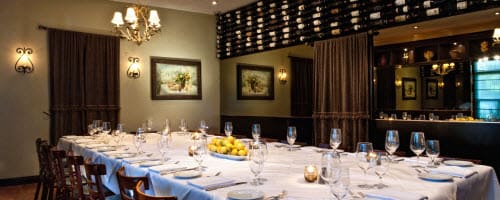Experienced restaurateurs know better than anyone else that getting restaurant tables in and out is an art that can take time to master; a skill novices will learn soon enough. Even though a high table turnover rate can boost revenue, ensuring a comfortable and satisfying dining experience for your customers is paramount as they are your backbone of your business there needs to be a fair balance in maximizing your profits in such a way that is not aggressive but rather makes customers feel welcomed and appreciated at your restaurant.
How to Maximize Restaurant Table Turnover Rates in 2024

Key Difference in Fine Dining and Casual Dining
One of the biggest factors you need to consider before looking for solutions that will efficiently seat as many parties per service is whether you operate a casual or a fine dining establishment. Upscale restaurants put more concentration on customer service whereas casual dining venues quantify their success based on how much revenue they generated. Even though these tips are directed at casual dining restaurants, they can be modified and applied in a fine dining setting as well to maximize a restaurant's table turnover.
Impact of Restaurant Table Management on Revenue

When restaurateurs are trying to strategize how to increase table turnover, they need to observe the duration of when their restaurant tables are occupied by patrons as well as how much they spend on their meals. Long wait times, however, are a major source of customer dissatisfaction which can have disastrous effects in your business. The longer it takes for them to be seated at their tables, the less likely it is that they will return to your restaurant, let alone order their meals. Noise pollution can also create an unpleasant dining atmosphere for customers: loud music and boisterous shootings may make them feel like they are being rushed to finish their meals and leave as quickly as possible which can have consequences on your sales volume.
Though you want to make sure there are enough restaurant tables to seat everyone, you don’t want to come across as being inhospitable towards visitors. Managing table seating capacity is proven to be an effective operational strategy that reduces wait time with a reservation system in place. Restaurant table management is a process in which the host assigns customers to their dining tables and wait staff to their stations. It also involves management over reserved seats and how waiters serve tables. Studies show that an organized seating and reservation system make a considerable difference in sales. In order for these systems to work, communication between servers and hosts must be direct and clear.
Optimizing Restaurant Table Configurations

Having the right size restaurant tables which you can use to combine with other tables to seat people can also yield additional profits at literally no cost. However, there are specific table configurations that increase revenue. This can be done by purchasing and arranging the right restaurant tables. A study conducted by the Cornell University of Hotel Administration reveals that midsize restaurants (hosts up to 200 people) with dedicated tables, specifically those who are affiliated with chains, produce the most revenue. These restaurant tables are exclusively built to seat large groups rather than using two-seaters pushed together to form larger tables.
Besides for flexibility, durability, aesthetics, and materials for tables, the study further demonstrates that large crowds at midsize restaurants with combinable restaurant tables are forced to wait for small tables to vacate and to be pushed together to form a singular big table to accommodate them. Doing as such lowers space utilization more than having dedicated tables with an empty seat or two. The study also found that small and independently operated restaurants with small combinable tables that host smaller crowds are more successful than restaurants without them.
Psychological Aspects of Seating Behavior – Why Location Matters
Environments influence on people’s behaviors. The use of color, sound, smell, and sight are applied to dining settings for the purpose and hopes of encouraging high customer volume ergo rapid restaurant table turnover rates. Design elements such as exterior features, restaurant layout, furniture and material also weigh heavily on revenue. Respective to seating capacity, variables that prolonged customers’ stay were configurations, flexibility, and comfort of the seating. Hence, most restaurateurs have an intuitive understanding of how table locations affect customers’ behavior.
A survey delivered in a virtual reality restaurant was used to measure the relationship between the participants’ table preferences, privacy, and overall satisfaction. It concluded that they preferred anchored tables that provide privacy and a good view of the restaurant. They were even willing to pay extra to be seated at those tables. Similarly, restaurant tables situated in high traffic areas were selected over tables exposed to other tables, especially by privacy seeking customers. Customers who emphasized the importance of the table locations expressed their satisfaction with table settings that gave them more privacy and space.
Using Technology to Your Advantage

Restaurants are willingly adapting to the era technology with the use of digital menus and online payment systems by default. And customers, especially the current generation, love it! The use of technology has proven to be very convenient in the restaurant business among staff and customers alike who enjoy being in control of their time. Being able to make and process payments from the comfort of a table top device is gradually becoming a necessity. A mobile PoS system most certainly helps expedite this process. Such upgraded technology devices enable wait staff to run credit cards and complete checks right at the table they are serving or allow customers to pay once they are ready to leave.
Renovating Your Dining Room

If your restaurant is struggling with table turnovers, that may be your cue to update restaurant design and layout. Centrally locating your tables and chairs will subconsciously encourage patrons to eat more quickly as the middle of the dining room is often the busiest spot in the restaurant. Moreover, they tend to linger around longer when seated on furniture that is anchored to the ground such as restaurant booths which is more appropriate for a fine dining establishment. Seating smaller parties in smaller tables and chairs can be beneficial, especially at casual dining restaurants where customers are paying for quick services.
You can also update the interior color scheme of your restaurant. Bright colors like yellow, orange, green and red can stimulate appetite causing them to eat faster thus resulting in faster table turnover rates. You can adjust your restaurant’s color scheme by painting the walls in a vibrant shade, using bold upholstery or finishes for the seating, adding accent pieces, installing pictures or setting restaurant tables with brightly colored dinnerware.





























































